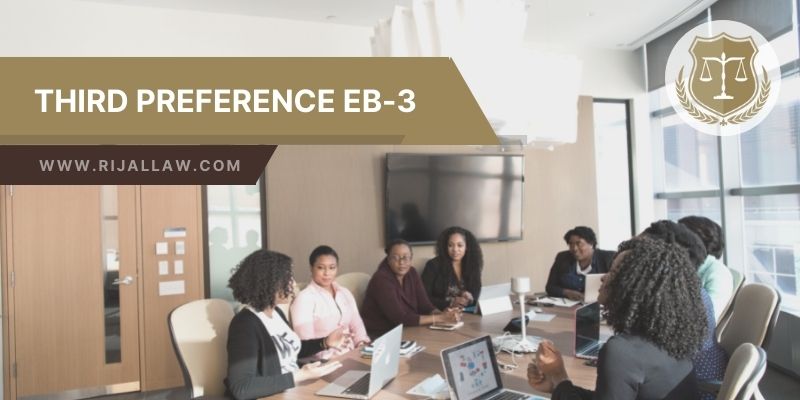DEFINING THE THIRD-PREFERENCE EB-3 VISA: WHAT IS IT?
The ‘Employment Third Preference’ Work EB-3 VISA is an employer-based petition based on Form I-140 (which we will circle back to discuss below). This option is tied to a specific job offer by a prospective employer that is looking to hire an immigrant worker for a permanent job position. It is important to recognize two key facts in this arrangement:
- The employer must be attempting to fill this position following a good-faith effort to recruit a qualified U.S. worker (that is, this should not be the employer’s first attempt to fill the position; EB-3 VISA’s are reserved for situations where the employer has simply been unable to find a qualified domestic worker at the fairly establish ‘prevailing wage’, and as a result is turning to the international pool of workers to find an appropriate hire).
- The employer will be the petitioning party. The immigrant worker, in this situation, is known as a ‘Beneficiary’ and will be required to make a sustained, good-faith effort to continue their employment for the petitioning employer until the immigrant worker successfully obtains a permanent legal status (within reason).
As you can see, this pathway is intended for foreign nationals that are seeking to become permanent residents of the United States. According to the State Department’s most recent information on the matter, the EB-3 VISA receives 28.6% of the total allocation of employment-based visas as set by the United States Congress. Any unfilled VISAs that ultimately end up unassigned that had been allocated to either the EB-1 First Priority or EB-2 Second Priority classifications are also made available as part of this pooled total.
Given the valuable nature of the so-called ‘green card’ that comes along with obtaining this permanent status, the rules and regulations for petitioning the United States government for one of these VISAs are complicated and extensive.
Let’s take a look at everything that goes into successfully obtaining an EB-3, starting with the types of workers that might qualify for one.

WHO CAN QUALIFY FOR AN EB-3?
There are three primary categories that an eligible worker will fall into, with each category defined both by the qualifications of the immigrant being considered for the position, as well as by the academic and educational requirements set for the position by the employer.
- SKILLED WORKERS – This category is meant for workers that have some combination of job experience, training, and education that will allow them to meet the open position’s certified requirements. Those requirements, which are set by the employer, should amount to two years of total job-specific qualification as the minimum. As a general rule of thumb, jobs that would require either an Associate Degree or an equivalent level of vocational training fall into this lane.
- PROFESSIONALS – For more complex or technically-oriented jobs, the second classification in the EB-3 VISA lane is open to workers that have at least a baccalaureate degree or foreign equivalent. These positions are generally pursued for college graduates who are able to provide needed skill sets that might not be overly common in certain regions of the country.
- UNSKILLED WORKERS (also referred to as ‘OTHER LABOR’ in certain quarters) – this final category is for labor-intensive types of jobs that do not require post-primary educational attainment or more than two years of occupation-specific training. Employers seeking a VISA for this category must demonstrate to the government’s satisfaction that the work in question is neither seasonal nor temporary. Some advocacy groups suggest using the term Other Labor here, as the official term ‘unskilled worker’ does not properly reflect the reality that hard work is, in and of itself, an important skill.
Regardless of the category, every EB-3 VISA must seek and be issued a PERM Labor Certification from the Department of Labor. As this is one of the more confusing steps in the long process, we will delve into specifics in the next section.
THE ‘PERM’ LABOR CERTIFICATION – A TRICKY TYPE OF BUSINESS
One of the most confounding parts of this effort is the Labor Certification Process. This is a series of steps designed to ensure that the prospective employer has taken all necessary measures needed to ensure that the proposed position is not displacing or excluding any existing or prospective domestic workers from the opportunity.
What does that mean?
Let’s check the Department of Labor’s definition first-up:
In general, the DOL works to ensure that the admission of foreign workers to work in the U.S. will not adversely affect the job opportunities, wages, and working conditions of U.S. workers. Once a permanent labor certification application has been approved by the DOL, the employer will need to seek immigration authorization from USCIS.
In other words, it is the Department of Labor’s job to make sure that the job in question has a legitimate need for a foreign-based worker. In order for an employer to prove this need, there are four basic steps in the PERM process that (when taken together), can take anywhere from 12 months to a year-and-a-half (and even longer, in certain circumstances).
- The first step requires that the employer define the job duties for the position. A series of requirements that are based on education, work experience, and job location is established. Since this process can take so long, it is very critical to take this step very seriously since any fundamental changes to the way these requirements are set can mean sending the entire process back to step 1.
- Once the employer has defined the job sufficiently, the next step is to request a Prevailing Wage Determination (PWD) from the Department of Labor, which is a formal response that takes into consideration things such as geography, the job occupation requirements, and cost-of-living to determine the minimum wage for this specific position that the employer might offer. This can be expected to take approximately six months but might take upwards to nine months if the position is unionized.
- After the Department of Labor provides this wage floor, the employer (often with the outside assistance of a professional firm with experience in the field) must conduct recruitment for the position: targeted advertising is done in local newspapers and outlets, describing the position, job requirements and pay rate. This recruitment must be conducted for a minimum of 2 months, under strict Department of Labor rules and guidelines. This step can also be complicated if a willing and qualified U.S. work applies for the position, as such an applicant would be presumed to have priority for employment.
- Upon completion of the recruitment period, and provided that no qualified domestic workers have secured the position, this entire PERM package can be filed with the Department of Labor. Current processing times hover around 5 to 6 months but could prove significantly longer if a case is chosen (at random) for auditing. The possibility of a process audit is one of the strongest reasons in favor of retaining a legal professional during this effort. Any failure to closely adhere to the requirements and specifications set forth by the Department of Labor could result in disaster for the intending employer.
Finally! After this long sequence is successfully seen through, the employer can at last petition USCIS for authorization. Once PERM is certified by the Department of Labor, it is time to complete Form I-140, Immigrant Petition of Alien Workers – easily one of the most important forms in the Employment-Based VISA World.
USING THE I-140 FORM – ‘IMMIGRANT PETITION for ALIEN WORKERS’
As always with USCIS, we recommend downloading the most current version of this file from the USCIS website, from the ‘Forms and Document Downloads’ section.
At the time of this writing, we are using Form Edition 09/30/20 (as indicated in the bottom right corner).
Remember that it is the employer who must fill this form out for the EB-3 VISA classification. While there are VISA options available for Employment-Based petitioning, those tend to be even more complicated, and any such consideration there should only be pursued with the assistance of a trained legal professional.
The details pertaining to any spouse and/or children related to the intended employee need to be submitted at this time as well, so make sure that documentation is ready and available before attempting to submit.
Processing times through USCIS for this option are typically running between 6 and 8 months, with some variance provided for seasonal traffic. This can be a long time to wait, especially on top of the long time periods required just to get to this point. For those with the financial resources, this wait can be shortened drastically by applying for Premium Processing alongside the I-140 petition. This special processing option is undoubtedly expensive – at a cost of $2,500 flat, and non-refundable, this can be a pricy (and potentially risky) choice – but the accompanying reduction in processing timeframe for receiving a response from USCIS from half a year (or more) down to two weeks can be equally invaluable.
OBTAINING EMPLOYER SPONSORSHIP
Another difficult part in this prospective process can be actually finding an employer willing to hire an intended immigrant. As can be plainly seen, the associated process and requirements are thorough and extensive, and usually entail quite a bit of cost as far as time, resources and financial investment goes. Nonetheless, these VISAs are almost without fail requested and acquired, year-after-year, which means that there are employers out there who are pursuing this sponsorship option, for various reasons.
The most efficient and straightforward option here is to utilize a reputable job database (such as Indeed or ZipRecruiter) and then filter to show jobs that are specific to your field along with the phrase “Visa Sponsorship Offered”. From there, it is up to an intending immigrant to approach employers and develop those relationships. With the right skill set and a significant amount of persistence, this approach can produce results.
Another option is to seek the services of a recruiter or similar staffing service that specializes in Visa Sponsored Employment opportunities. A word of caution here: many ‘staffing specialists’ are predatory and seek to take advantage of poorly-informed aspirants seeking gainful opportunities in the United States. Always take care to fully research any professional assistance before handing over hard-earned money.
BACKLOGS IN THE VISA PROCESSING SYSTEM
The persistence of the Coronavirus pandemic has unfortunately created significant backlogs all throughout the government departments responsible for processing immigration matters. This is additional pressure on a system that was already overburdened and underfunded in the best of times.
Any employer or intending immigrant setting out on this journey should be advised that patience is more than just a virtue when dealing with the federal government; it is a requirement.
CONCURRENT PROCESSING for I-485
Lastly, let us take a look at the endgame of the Employment-Based VISA process for most immigrant workers: the green card.
An immigrant with an approved I-140 petition is authorized to work for the intended term of the job, of course. But they are also eligible to submit the I-485 Adjustment of Status that allows them to seek permanent residency in the United States. This Adjustment of Status can ultimately be used to petition for the residency of immediate family members and can serve as a springboard into a new life within the borders of the great Republic of America.
For that reason, this is seen as a priceless opportunity in many parts of the world and should be treated as such. The documentation requirements are stringent, as well as complicated, and so we recommend seeking the advisement and assistance of skilled legal representation in this endeavor.
For those that do proceed to the I-140 filing stage, be aware that it is possible to concurrently file an I-485 Application for Adjustment of Status alongside the Petition for Alien Worker. If successful, this approach can significantly reduce the amount of time it usually takes to get to the green card stage of things. However, this path is not without risk, as the I-485 can be rejected out of hand if the underlying I-140 is not approved for whatever reason, and the filing fees are generally not recoverable in those cases. So proceed with judicious care.

